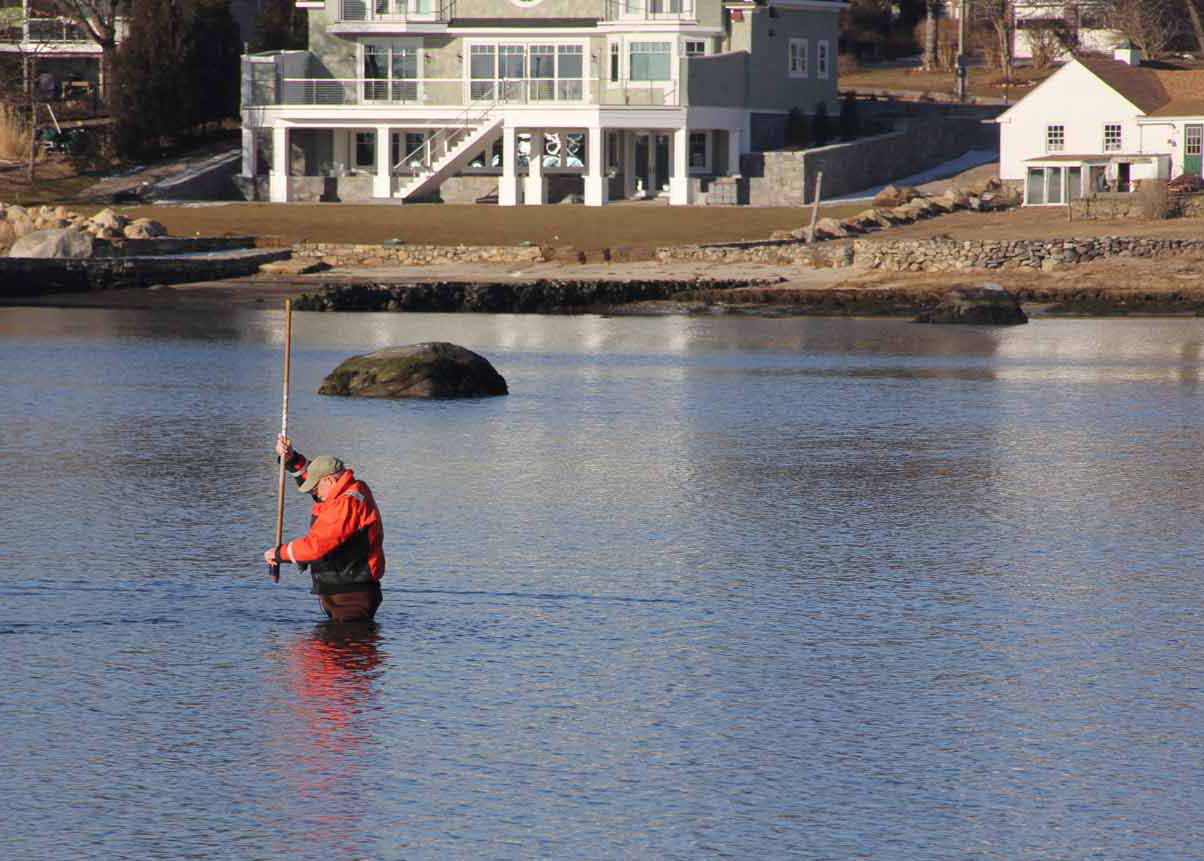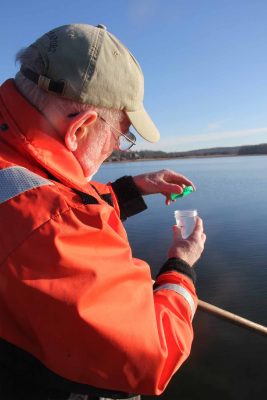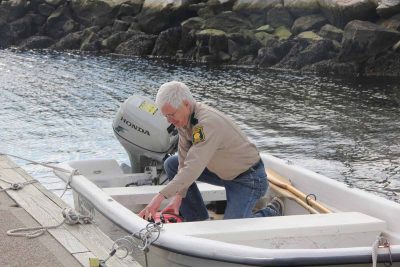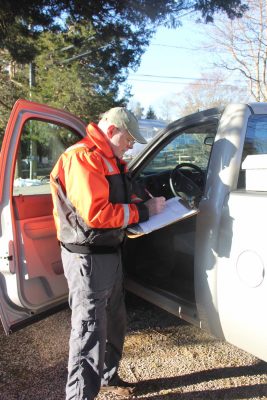
Story and photos by Judy Benson
Don Murphy knows he’s not the typical “citizen scientist” – the label used for members of the general public who help collect data and samples for scientists to analyze.
Even though the retired Coast Guard oceanographer holds a doctorate in physical oceanography, he readily admits his professional expertise doesn’t give him a great advantage over any other member of the public looking to apply a concern for marine resources to helping do the legwork laboratories need to assess environmental conditions.

“It’s not rocket science,” he said of the steps he’s required to follow in his role as a citizen scientist. Overqualified or not, he volunteers because it’s a satisfying way to spend time outdoors and have a positive impact on an area he cares about – maintaining good local water quality. As the Citizen Science Conference takes place this week in Raleigh, N.C., just a month before Citizen Science Day on April 13, the role of citizen science – or community science, as it’s also known – is being highlighted by the National Oceanic and Atmospheric Association’s 34 Sea Grant network programs nationwide, including Connecticut Sea Grant.
Murphy, chairman of the municipal shellfish commission in Stonington, CT – the citizen panel that oversees the town’s recreational and commercial aquaculture beds – is among the dozens of volunteers and part-time shellfish wardens in Connecticut coastal towns who collect water samples through all four seasons to verify that the public can safely harvest and eat clams and oysters. After a heavy rainfall triggers required closure of a recreational bed due to expected spikes in bacteria levels, they collect additional water samples along with shellfish meats. The water and meat samples are tested by scientists at the state’s Bureau of Aquaculture to determine when beds can reopen.
“I do about 18 to 24 rounds of sampling in a year” visiting multiple sites each time, Murphy said.
During summer he and one of the town’s shellfish wardens collect many of the samples from a small boat, but on colder days like the morning of March 13, he dips the collection stick into the water from docks, or clads himself in waders to walk from shore to waters at least 1½ feet deep. That’s the minimum depth for a proper sample. The process requires some multi-town cooperation, too, since Stonington and nearby towns with recreational shellfish beds – East Lyme, Waterford and Groton – coordinate their collection times so one driver can transport all the towns’ samples the 50-plus miles to the state lab on the same trip. It’s a lot of effort, he said, but worthwhile.
“Days like this it’s a treat to be out here,” said Murphy, as he sloshed through the tidal area of the Mystic River that is one of the town’s prime recreational clamming beds. As the bright sun sparkled on the calm waters, the mid -40s temperatures felt like a reminder that boating season would return soon.

Tessa Getchis, aquaculture extension specialist for Connecticut Sea Grant, said the citizen scientists of Connecticut’s 18 municipal shellfish commissions are essential to keeping recreational shellfish beds open. The volunteers and part-time wardens sample in 80 different areas where the public can dig their own clams and oysters.
“They fill this critical need to make sure the shellfish are safe to harvest,” she said. “They also do collection of shellfish meats and transport the samples to the state lab in good weather and also after a rainfall. They also have to go out and mark areas when they’re open and closed, and they do a lot of public outreach and education. They really play a key role in the interface with the public. They’re the local experts, because it’s their backyard.”

Connecticut’s system for recreational shellfishing is fairly unique, Getchis said, because of the many areas open to the public, the reliance on municipal oversite, and the volunteers and wardens who do the sampling.
Each January, Connecticut Sea Grant organizes a meeting of the 18 municipal shellfish commissions with the state Bureau of Aquaculture. A short refresher lesson on the correct techniques for sampling is a routine part of the agenda. Aquaculture bureau officials also offer one-on-one training sessions for new commissioners as needed, emphasizing the importance of keeping the samples cold, free of contamination and taking them at the right time – within 90 minutes of low tide.
Richard Conant, the deputy shellfish warden for Groton, was among the approximately 50 people in attendance at the Jan. 26 meeting. Retired from a career as the environmental director for the Naval Submarine Base in Groton, Conant said being a part-time shellfish warden gives him a chance to spend time in the part of the natural world he came to love as a student many years ago, when he earned a master’s degree in marine biology. He works about 12 hours a week, typically spending three of those doing the sampling himself, or driving the boat for a volunteer commission member filling the collecting bottles.
“We’re the gophers that do all the sampling,” he said. “But all of this is contributing to the focus on water quality as it affects shellfish resources and marine resources.”
Judy Benson is the communications coordinator for Connecticut Sea Grant.